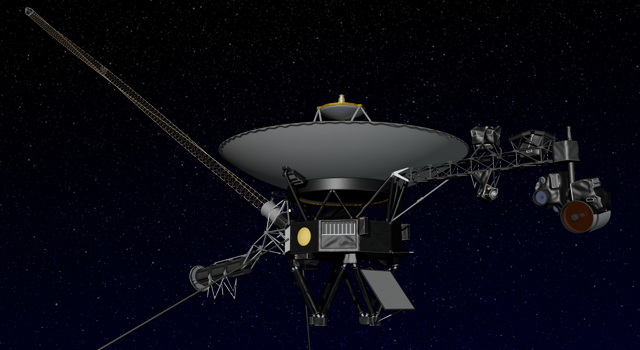
Some of the earliest explorations of the universe beyond our solar system were made by four probes launched by NASA in the 1970s — Pioneer 10 and 11 and Voyager 1 and 2. The Voyager probes have since departed our solar system and moved into interstellar space, while contact was lost with the Pioneers in the 1995 and 2003. But where will these early probes end up? And how long will they travel before encountering another star? A new study has used data from the Gaia space telescope to answer those questions.
“Following their encounters with the outer planets in the 1970s and 1980s, Pioneers 10 and 11 and Voyagers 1 and 2 are now on escape trajectories out of the solar system,” researchers Coryn Bailer-Jones and Davide Farnocchia say in their paper. “Although they will cease to operate long before encountering any stars (the Pioneers already have), it is nonetheless interesting to ask which stars they will pass closest to in the next few million years.”
The nearby star Proxima Centauri will be the first passed by three of the explorers, as it is located around 4 light-years away in the Alpha Centauri system. That’s practically in our back yard, cosmically speaking. Voyager 1 will pass by Proxima Centauri within 16,000 years, while it will take 20,000 years for Voyager 2 to reach it, and 18,00 years for Pioneer 11 to meet our neighboring star.
Pioneer 10 is on a different path and the first star that it will meet will be Ross 248, located 10 light-years away in the northern constellation of Andromeda. Astronomers have predicted that at some point in the next 80,000 years, Ross 248 will overtake Alpha Centauri to become the nearest star to our Sun, although only for a brief time. Pioneer 10 will pass by this star in approximately 34,000 years.
Other notable stars that the Voyager 1 craft will visit include the flare star HD 28343, a type of variable star which can occasionally exhibit dramatic increases in brightness which only lasts for a few minutes. Astronomers think that stars like HD 28343 flare due to magnetic energy within their atmospheres, similar to the solar flares of our sun. There’s also Gliese 445, an M-type main-sequence star 17.6 light-years away which Voyager 1 will pass in 44,000 years.
If you’re interested in the fate of the craft even further in the future, then the researchers also considered how long they are likely to travel before colliding with or being captured by a star system and ending their journey — and they found it is an incredible 1020 years (just a bit shy of a sextillion, but who’s counting). It somehow comforting to think that long after humanity is gone, our early explorers may still be traveling across the universe.



